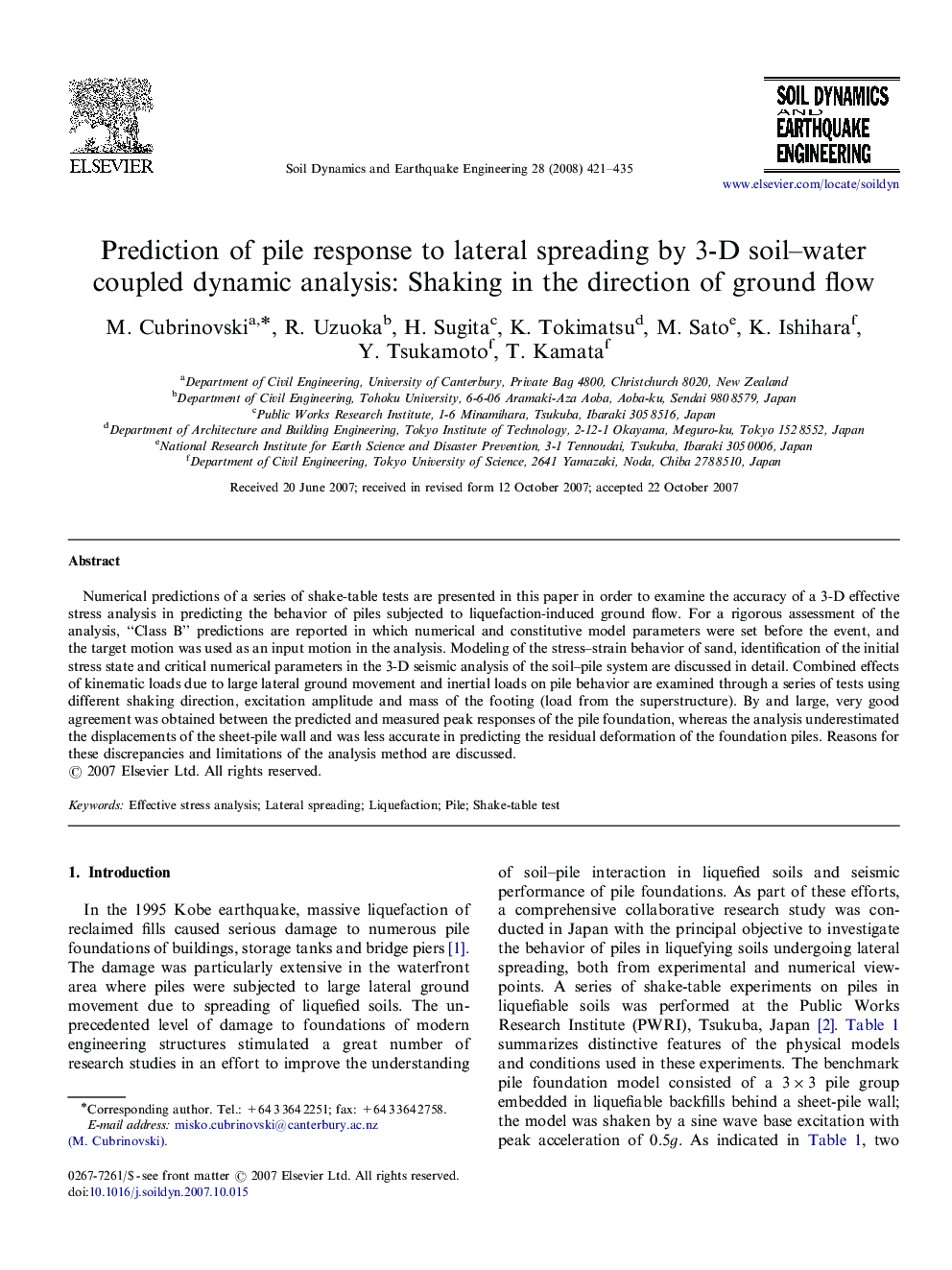| Article ID | Journal | Published Year | Pages | File Type |
|---|---|---|---|---|
| 305061 | Soil Dynamics and Earthquake Engineering | 2008 | 15 Pages |
Numerical predictions of a series of shake-table tests are presented in this paper in order to examine the accuracy of a 3-D effective stress analysis in predicting the behavior of piles subjected to liquefaction-induced ground flow. For a rigorous assessment of the analysis, “Class B” predictions are reported in which numerical and constitutive model parameters were set before the event, and the target motion was used as an input motion in the analysis. Modeling of the stress–strain behavior of sand, identification of the initial stress state and critical numerical parameters in the 3-D seismic analysis of the soil–pile system are discussed in detail. Combined effects of kinematic loads due to large lateral ground movement and inertial loads on pile behavior are examined through a series of tests using different shaking direction, excitation amplitude and mass of the footing (load from the superstructure). By and large, very good agreement was obtained between the predicted and measured peak responses of the pile foundation, whereas the analysis underestimated the displacements of the sheet-pile wall and was less accurate in predicting the residual deformation of the foundation piles. Reasons for these discrepancies and limitations of the analysis method are discussed.
